ICE CREAM, CAFE’S and CHIPPIES
ICE CREAM, CAFE’S and CHIPPIES
The Italians began to arrive on Scottish shores from the late 19th century onwards. For some, it was seen as a stopping point en route to the Americas; for others they were recruited. Initially they came from northern areas such as Tuscany, but emigration spread to the south (Naples region) by the 1900s. Scotland saw an increase in Italian immigrants when America changed its immigration policy and closed the door of opportunity for many of the poorest Europeans.
Why did they leave their homeland?
The main reasons Italians sought a new life was as a direct result of economic conditions. Poverty was rife and living conditions were harsh, with famine and sometimes droughts. Furthermore, Italy had an agricultural-based economy that was experiencing severe hardships and industrialisation was slower than in other European nations. Many men saw an opportunity to go elsewhere to earn a living and therefore left in order to support their relatives back home. After this slow start, in which the Italian immigrants failed to make any real economic progression, the Italians seized the opportunity to move into the catering world. Initially working as ‘hokey pokey’ men, selling ice cream from barrows, these men had been recruited in London and sent to Scotland from 1880 onwards. They quickly moved into working-class areas, combining ice cream making with selling fish and chips. Restaurants and takeaways were established and sold food made using ingredients widely available in Scotland – fish and potatoes.
http://www.youtube.com/watch?v=gKtl7uHdH5M&feature=related
http://www.youtube.com/watch?v=Vt5tLTnu7Ws&feature=related
Special relationships and mingling bloodlines don’t come much thicker than the Scots and the Italians and this tie dated right back to the time of the birth of Bonnie Prince Charlie who was born in Roma in the year 1720.
The mass immigration of Italians to Scotland brought with it generations of Italians who really could not do what trade’s they had learned from home, like working on the land in the production of vines for winemaking, and olive trees for the olive oil production or perhaps working with the marbles from the quarries in Carrera. or with their skill in laying of mosiacs or in stucco plaster. These professions were not the professions of the Scots. The immigrants were escaping the famine, drought and corruption in their homeland after the unification of the Regions into a united Italy.http://www.youtube.com/watch?v=BPVPdWNxt1k&feature=related
So they had to make do with what this land had to offer them. They were a versitile lot and made the best of what produce was at hand. We of course had our potatoes, plenty potatoes, and with the green fertile lands came lovely milk from the cows. From the shores came seafood in great abundance.
Fresh off the boats these Italians at first traded their statuettes. The Italians loved this land. The families did not all stay in one seaport but they distributed throughout the country. This is how we find some members of our families in Edinburgh and some in Aberdeen and Glasgow.
Ice-cream has a long history in the world of public eating. As far back as the fifteenth century ice, snow water,
and fruit ices were being sold by merchants on the streets of Turkish towns.1 In
Western Europe, however, ice-cream remained a luxury enjoyed mostly in royal
courts or private houses until the nineteenth century.http://www.scalan.co.uk/Italians.htm
It was Italian immigrants who introduced ice-cream to the Scots as a street
food and who created the thriving take-away culture that still survives in
cities such as Edinburgh, Glasgow, Aberdeen and Inverness.
Italians had introduced the idea to Britain by 1850 at the latest, when Carlo
Gatti was peddling ice cream to Londoners from a painted cart. He was so
successful that he and others brought many more Italians over to join them.
These immigrants were grossly exploited labour, often lodged in poor
conditions and paid little; during the winter they often worked as hurdy-gurdy
men. Every morning in summer they cranked and froze the ice cream mix they had
made the previous night, and went their rounds in London, Glasgow, Manchester,
and other growing industrial cities crying, ‘Gelati, ecco un poco!’ It is
thought to be because of their cry that ice-cream vendors were called ‘hokey
pokey men’.
Eventually, as more of the immigrants began to move into the shop trade ice
cream barrows began to vanish. In the shops the Italians specialised in ice
cream in the summer and, in winter, hot peas and vinegar. These shops were often
part of chains that would be sold off to employees who could prove their ability
to make a profit. One Italian woman remembers her father operating such a chain:
My father came to Edinburgh in 1902 and in those days you could get a shop and
some stock for about £150. After a while, he used to open the shops and sell
them to the Italian fellows, you know, as a going concern. First of all he
took them on as payin’ servants [employees] and then, if they were worthy, he
sold them the shop and they paid him so much a week, you see, towards the shop
becoming theirs.
As economic conditions grew worse in Italy the trickle of immigrants became a
flood by the 1880s. Recruited by agents working for padrone in London, Italians
were brought to Britain as cheap labour. Many were sent North to Scotland where
they were then given a barrow and became ‘hokey pokey’ men.
From these beginnings the friggitoria or gelateria business was born.
They soon cottoned on to this trade which had been flourishing in Clerkenwell in London. Realising that all that was needed for this was a few basic necessities such as a cylindrical zinc drum with a wooden barrell inside, and of course the fresh full cream milk which was plentiful in this new land, some salt and ice. The procedure was simple. You boiled the milk and then left it to cool overnight. Next morning you would fill the space between the two barrells with the salt and ice mixture. This created a brine, maintaining the ice-cream at the correct temperature. The milk mixture was then poured into the inner cylinder and by hand-turning it, the milk eventually froze and the ice cream was formed. It was not an easy process and took great physical strength for the churning process. The barrow would then be used to push the ice cream around the streets .And why were they called ‘hokey pokey men’? In Italian ‘ecco un poco’, meaning ‘here a little’, translated into the local lingo as ‘have an okey’ – or so they say!
It’s commonly said that the name of the comestible comes from the cry of the sellers, either
Gelati, ecco un poco! (“ice cream, here’s a little!â€) or O che poco! (“O how little!â€, meaning it was cheap rather than insufficient in quantity — its price was a penny, both in Britain and the US, and led to the cry Hokey-pokey, penny a lump!). We can’t be sure this is where the name came from, but the sudden appearance of the same term within such a narrow space of time 3000 miles apart might suggest that it was brought by the Italians themselves
Hokey pokey ice cream deserves a special mention in the history of ice cream. After the soldiers returned home from the American Civil War in 1865, it became difficult to find work in the American cities, and many unemployed immigrants living in those cities became ice cream vendors.
The term “hokey-pokey” soon became identified with poor-quality ice cream, however, as it was sometimes made of questionable ingredients under very unsanitary conditions, and it was not uncommon for consumers to become ill after eating it. The way it was served didn’t help either.
When customers finished eating their ice cream from a penny lick, the glass “penny lickers” were returned to the vendor who simply gave them a brisk wipe with his ever present rag before refilling them for his next customers.
As in London, England, they were called Hokey-Pokey men because they often shouted “Ecco un poco” in Italian which means when loosely translated, “Here’s a little piece.”
Working at first from their homes they started to produce the first of the Italian made ice cream which they sold in the streets of the big cities from barrows. At first they started to produce this with their own communities in mind but it soon became abundently clear that the locals had also fallen in love with this product. With their shouts of ‘Gelati, ecco un poco’ the locals soon got to know them and they nicknamed them the Hokey Pokey Boys. These carts and barrows came in vaious varieties and forms. The example here is the Baldacchino or canopied sort. In these early days there were no cones or wafers. The ice cream was served in little ‘licking glasses’. These were rinsed out between customers, a practice which increasingly caused hygiene concerns.
Once the locals got to like the products then it was time for them to establish themselves a bit more and look for property where they could make and sell their wares. Because of the slum conditions in the centre of the big cities at this time properties were not hard to come by and were relatively cheap to rent or buy. Of course many of these boys would have help from the local Padrone’, the Italian who had shipped them over and set them up in the first place. He would set them up and of course share in their profits. Also as eary as 1891 there was business loans availale for ScotsItalians through the Socieieta di Mutto Soccuorso.http://www.youtube.com/watch?v=64AeCUyR1TY&feature=related
The Scots/Italian Cafe’ culture started right there, at this point in history. There were many who thrived and whose descendents are still about today. Many, like our own ancestors, were very successful in this new business, but with unforseen circumstances ahead of them, early deaths and new diseases for which they were not equipped, their futures were not so rosy.
Our own great great grandfather Joe Brattissani was the first of the Edinburgh immigrants to have an operational fish and chip shop in Scotland.
These early shopkeepers were quick to learn the new customs and soon got to know that the Scots are a nation of people with a sweet tooth so they would also offer their hand made ice cream, and this factor in itself helped make their profits grow. The Italians made beautiful ice cream, like no others could, lovely tablets and desserts to die for. Their creativities had a new outlet and they poured their skills into this new craft. The Italian Confectionery was born out of this love for creativity and the Scots loved it.
Our own ancestor Emilio Quilietti was one of these boys and in his ten years in Edinburgh his business grew into a little empire with 8 shops. His very early death at the age of 29 however would put an end to his great ambitions for his children. His shops would have sold his ice cream, which he manufactured himself and the fish and chips which skills he inherited from his father-in-law..http://www.youtube.com/watch?v=BPVPdWNxt1k&feature=related
The Chippies of course would establish themselves only through real hard work and backbreaking hours of chipping potatoes by hand. Fish in those days would not be delivered ready for the batter. They would come whole in boxes or crates. Haddock of course is the local Scottish Fish which in those days would have been plentiful around the shores of the country. The fish would have to be gutted and filletted, but it would always be freshly made for the customers who loved this new cuisine.
The fat for frying would not be oil it would be lard. The combination was wonderful.
It is recorded that Soldiers in Gallopoli remembered with great affection the fish and chips served up by Mrs. Qualatta [Quilietti] in her shop at the fighting five salloon which was situated at the top of Leith Walk in Edinburgh.
Mrs. Qualatta’s father was Joe Brattissani and he has claim to having the first operational fish and chip shop in Scotland. And this is true.http://edinburghnews.scotsman.com/topstories/The-Brattisanis-are-cashing-in.2539479.jp
Culinary variations of serving the fish and chips exists between the regions of the U.K. Scotland and Northern Ireland like their fish to be of the haddock variety and with no skin left on. England, particularly in the south, leave the skin on on one or even both sides of the fish and they would use Cod. The wrapping of the product is also a great tradition. You would be asked if you want the poke open or shut. The supper would be wrapped in an inner layer of white paper and most importantly the outer layer would be of newspaper. This was not only for insulation but alwo to absorb grease. And depending on which area of the country you were from you would be asked if you require sale and sauce or salt and vinegar………
The Brattessani family came to Edinburgh in the 1870s. Our great great grandfather Giuseppe or Joe was a great franchiser and had businesses in Paris as well. His daughter Valentina Brattissani, our Great Grandmother was born in Paris in 1870 and indeed the family moved between the cities of Parma in Italy, Paris and Edinburgh for many years.
Joe’s children were mostly girls. The girls would marry and set their own paths. So his affections would be as as a Padrone’ to many of these barrow boys and we know that he set us many of his Brattissani nephews on their arrival in the country. His first business in Edinburgh was in Leith Walk in 1875 and he is documented as having the first Fish and Chip Shop in the City shortly thereafter.
The History of the fried fish originates long before the potato was introduced in Europe in the 17th century. History indeed credits the Portuguese with introducing the dish to Japan [tempura].
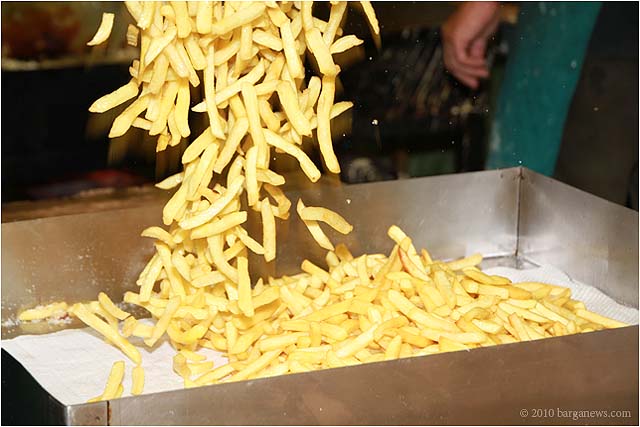 In early August each year thousands of people make their way down to the Johhny Moscardini sports stadium to enjoy the annual Fish and Chip Festival. The covered seating has meant that even with the terrible weather that Barga has suffered some years.
In early August each year thousands of people make their way down to the Johhny Moscardini sports stadium to enjoy the annual Fish and Chip Festival. The covered seating has meant that even with the terrible weather that Barga has suffered some years.
Freshly cooked pasta, grilled steak and sausages are on the menu but all eyes are on those freshly crisp fried fish and chips that you can only get once a year prepared by the expert hands of the AS Barga cooking team who have now been serving up pesce’ e patate’ for 29 glorious years.
Some of the story behind the Fish and Chip festival: It was from this town, population 10,000, that harsh economic conditions caused an exodus to the industrial centres of Scotland at the end of the 19th century.
In such places as Ayr, Largs, Glasgow and Greenock, to hungry dockers and shipbuilders Italian immigrants sold fish and chips in the winter and ice-cream in the summer and so created a culinary culture that continues to this day.
The names of Nardini, Conti and Marchetti became high street fixtures as the Italians grafted unremittingly. Some of the settlers returned upon retirement and, by way of homage, started the Pesce e Patate festival 29 years ago as a greasy-lipped celebration of emigration and homecoming.
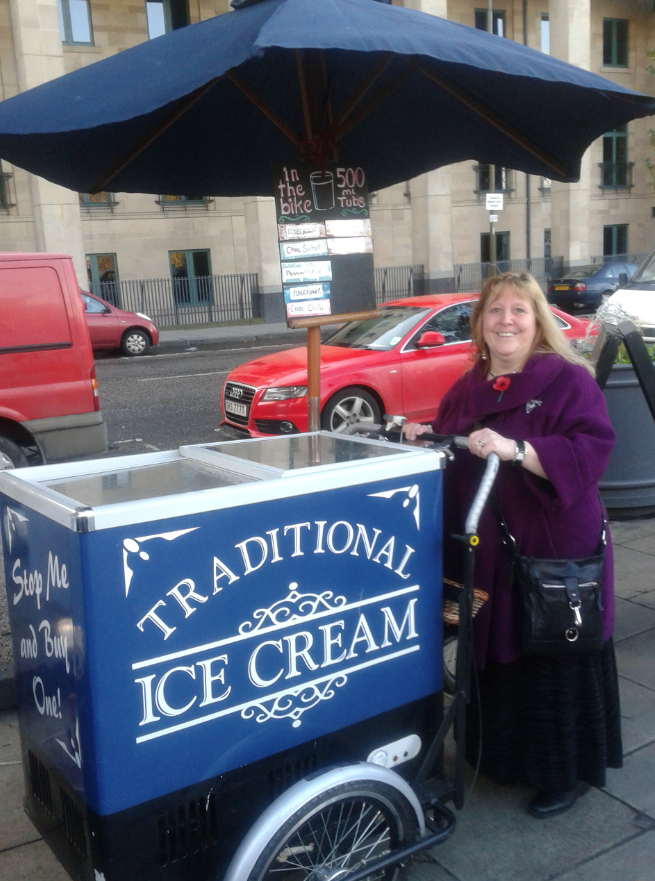
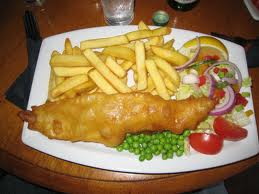
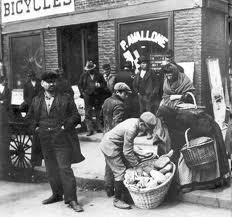
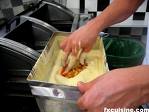
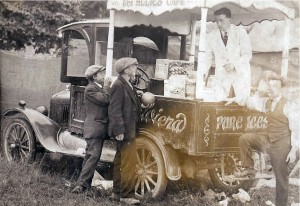
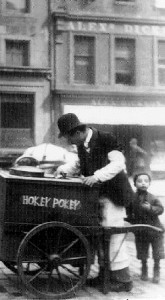
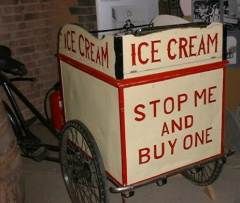
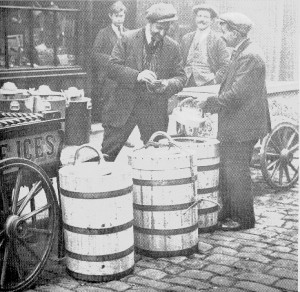
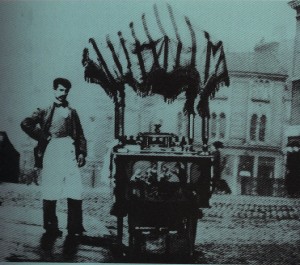
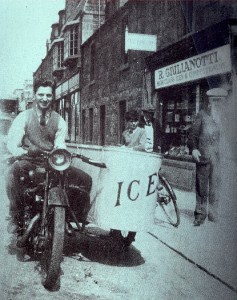
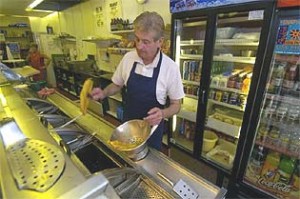

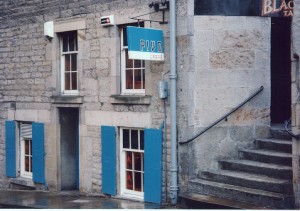
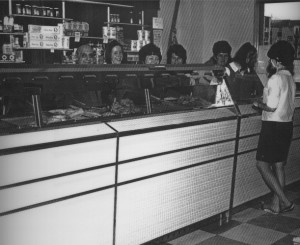
My grandfather Bernardo Matonti (nono) & my dad Tony Carrera both had Fish N’ chip shops in Glasgow. My grandfather had both ice cream cafe & chip shop in Bridgeton.Dad’s shop was the Gaiety in Anderson next to the Gaiety Theatre (where the Beatles played in the early sixties, & needless to say had some of my dad’s cuisine. I was supposed to meet them that night. I was around 12yrs old but couldn’t get near the shop cause of all the crowds, should have gotten there earlier.Of course I thot his fish n’ chips were the best. I used to wk there after school somtimes & every1 used 2 comment how smart I was to count up there bill, in pounds, shillings & pence w/out using pencil & paper.2 of my grandfathers sons also had chippies 1 was in Langside, not sure where the other was.Dadd’s shop was demolished as they were building a motorway & we also lost our house in Whiteinch 4 the same reason, next to Victoria Park, was reallyy sad about that.Ciao
My grandfather Bernardo Matonti (nono) & my dad Tony Carrera both had Fish N’ chip shops in Glasgow. My grandfather had both ice cream cafe & chip shops in Bridgeton. Dad’s shop was the Gaiety in Anderson next to the Gaiety Theatre, where the Beatles played in the early sixties, & needless to say had some of my dad’s cuisine. I was supposed to meet them that night. I was around 12yrs old but couldn’t get near the shop cause of all the crowds, should have gotten there earlier.Of course I thot his fish n’ chips were the best. I used to wk there after school sometimes & every1 used 2 comment how smart I was to count up their bill, in pounds, shillings & pence w/out using pencil & paper.2 of my grandfathers sons also had chippies 1 was in Langside, not sure where the other was. Dad’s shop was demolished as they were building a motorway & we also lost our house in Whiteinch 4 the same reason, next to Victoria Park, was really sad about that. A great house. Ciao
[…] Photo: Penny lick vendor with horse Nancy Oswald. Photo: Edinburgh Penny lick vendor and more information on Italian entrepreneurs The Quilietti Family […]
Hi, my grandmothers family were from Stonehaven. They left in 1928 when my great grandmother was pregnant with my grandmother. Their name was McIntosh. There is something to do with this ice cream parlour Guilianottis in Stonehaven and my grandmothers father, who she never know. He was Italian and she and one of my uncles is dead ringer for the man on this bike. His name was never on the birth certificate, however there was talk in the past about the owner or the owners son as her father. We are desperate to trace her routes and family tree. Any information would be greatly appreciated.
Hi my father had a fish and chip shop in Stonehaven in the 40/50 his name was Alessandro he also had relatives in Stonehaven who had a sweet and ice cream shop , the name Giulianotti is still above a shop in Stonehaven, my dad also had a little ice cream van where he sold his ice cream on the beach , dads full name was Alexander Giovanni Giulianotti .
An outstanding share! I’ve just forwarded this onto a coworker
who was doing a little homework on this. And he
actually bought me lunch due to the fact that I found it for him…
lol. So let me reword this…. Thanks for the meal!! But yeah, thanks for
spending time to talk about this subject here on your web site.
thanks for kind comment